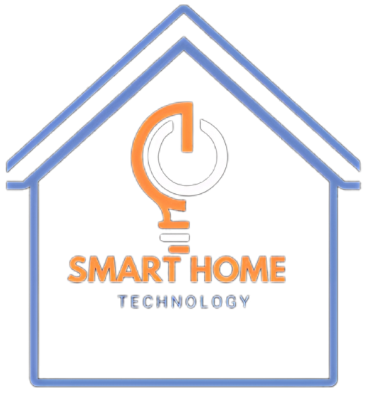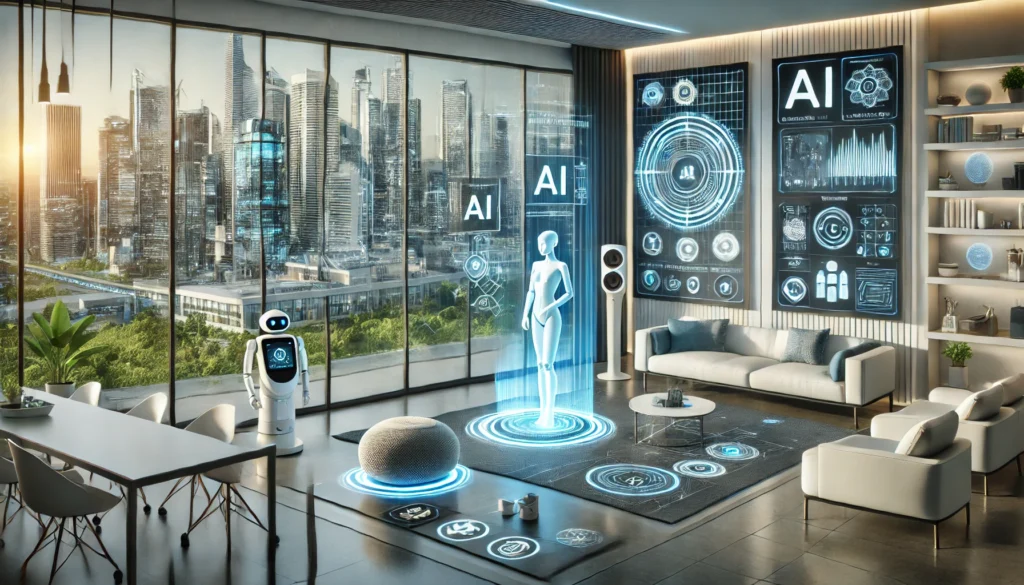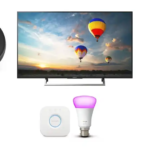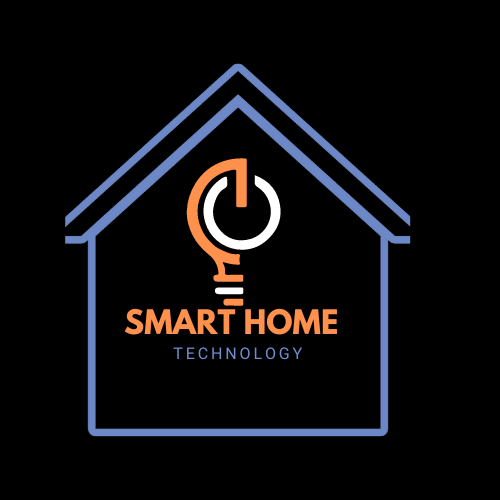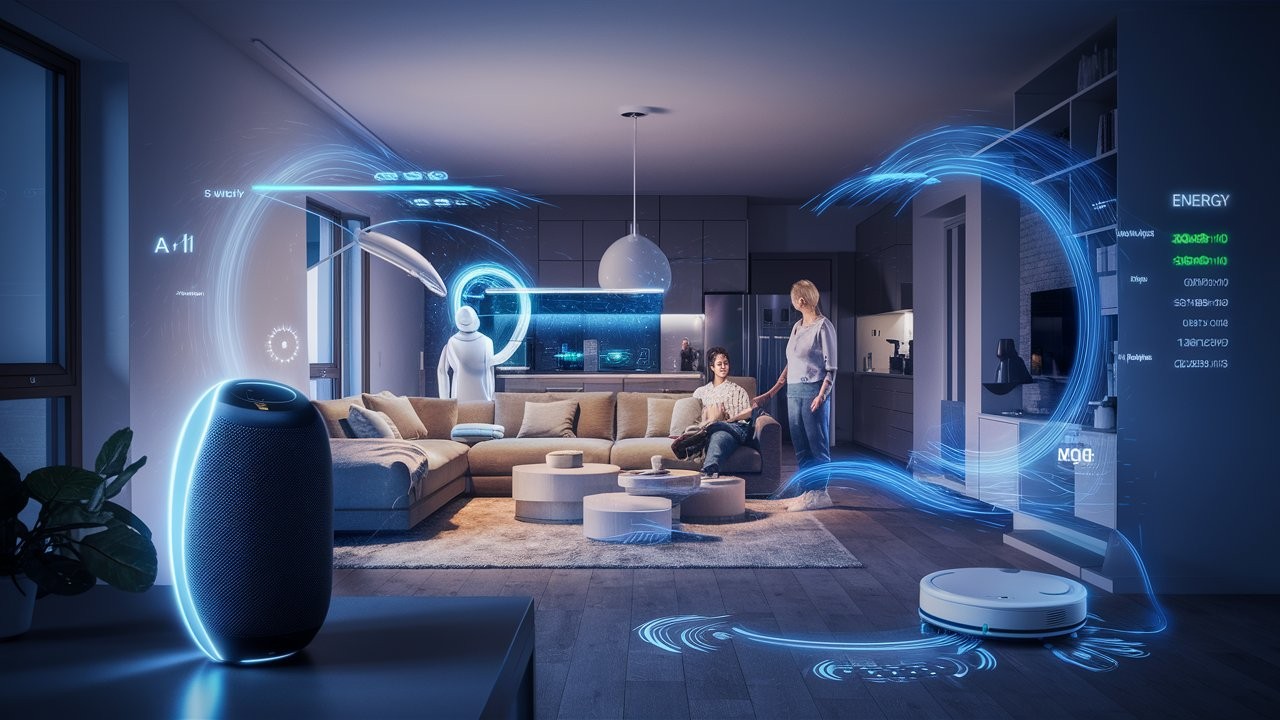
Table of Contents
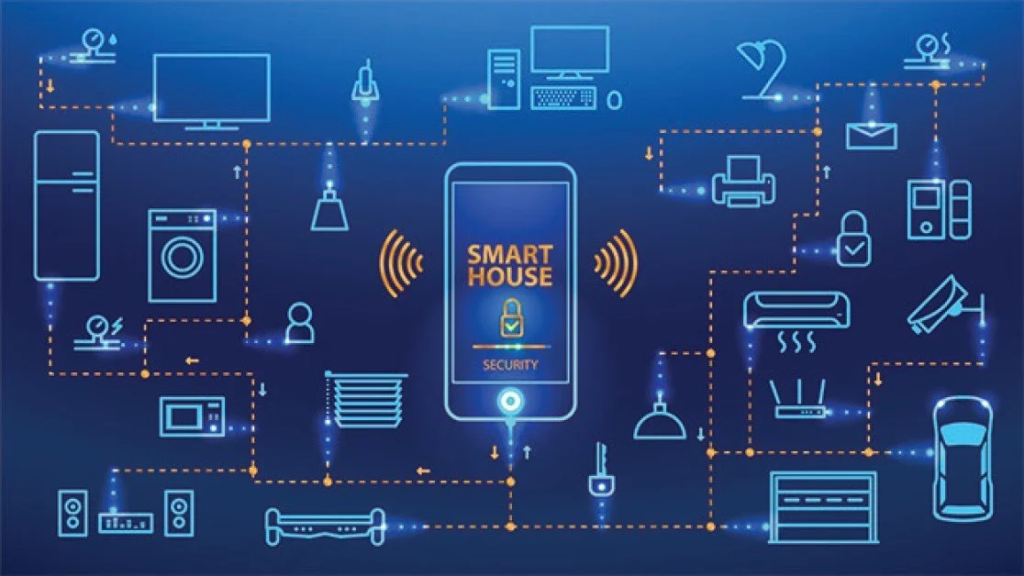
Have you ever wondered how your house may become smarter with a simple tap on your Apple device? In 2023, approximately 30% of US households have a smart home device, with Apple’s HomeKit ecosystem leading the way. HomeKit works smoothly with various smart devices, enabling Apple customers to control everything from lighting and temperature to security systems.
HomeKit, compatible with the iPhone, iPad, HomePod, and Apple Watch, is a single center for easy home automation. In this article, we’ll look at the smart home gadgets that work with Apple and how they improve your home’s functionality and convenience.
Smarter Homes with AI Innovation

Smart homes are changing the way we interact with our living spaces by merging AI with ordinary things, resulting in increased convenience, efficiency, and safety. Smart home technology, which combines AI and IoT (Internet of Things) devices, allows you to control and automate almost every element of your home. Let’s look at how AI improves smart homes and what role AI home automation plays in our daily lives.
How AI Enhances Smart Homes
Artificial intelligence improves smart homes by utilizing machine learning and natural language processing (NLP). These AI algorithms allow gadgets to assess data, anticipate human preferences, and react to changing situations, making the home environment more intuitive.
Here is a list of ways that AI improves smart homes include:
1. Voice Assistants: AI-powered speech assistants, such as Amazon Alexa, Google Assistant, and Apple Siri, are at the cutting edge of smart home connectivity. They employ natural language processing to understand commands and give you hands-free control over various smart home gadgets. Voice assistants make it easier to control your house, whether adjusting the thermostat, turning on lights, or playing music.
2. AI Home Automation Systems: These systems employ machine learning to assess user behavior and improve settings without direct intervention. A smart thermostat, for example, can detect when you’re at home and away and change the temperature to save energy while maintaining comfort. Similarly, lighting systems can turn on and off in response to motion sensing or the time of day.
3. Smart Home Security: AI-powered smart home security systems, such as smart cameras and security alarms, can distinguish between regular and suspicious activity. AI systems can recognize faces, detect motion, and alert homeowners to odd activity. This provides peace of mind and improved security throughout the clock.
4. Smart appliances and Devices: Artificial intelligence allows refrigerators, ovens, and washing machines to connect and optimize energy use. A smart fridge, for example, may track shopping and recommend meals, whereas a smart oven may warm itself in response to a recipe’s specifications. These devices make life more efficient and fun.
5. Energy Efficiency and Sustainability: AI home automation contributes significantly to sustainability efforts. Smart devices can optimize energy use by learning usage patterns, such as turning off lights when rooms are vacant, regulating heating and cooling based on your preferences, and ensuring that appliances only consume energy when necessary.
What is IoT and its Role in Smart Homes
The Internet of Things (IoT) is a huge network of interconnected gadgets that communicate and share data through the Internet. These gadgets, which range from smart home appliances to industrial machinery, are equipped with sensors, software, and other technologies that allow them to collect and transmit data seamlessly.
A smart thermostat, for example, can communicate with weather forecasts and internal temperature data, whereas an innovative security system can connect to motion sensors, door cameras, and alarms. AI home automation works well because IoT is seamlessly integrated into smart houses.
Devices collaborate to create a personalized, efficient, and secure environment, all managed by centralized systems or even distant devices such as smartphones.
Whether it’s voice assistants or security systems, integrating AI and smart gadgets makes modern life more connected and personalized.
Key Components of AI in Smart Homes
Incorporating AI into smart homes has transformed how we interact with our living environments. Smart home AI uses cutting-edge technology to provide a more efficient, secure, personalized home environment.
The following are the main components of AI in smart homes:
1. Intelligent Assistants (e.g., Alexa and Google Assistant)
Smart assistants are at the forefront of AI-powered home automation. These gadgets use robust voice recognition and natural language processing (NLP) to understand and respond to human input. Users may use these AI smart gadgets to conduct several hands-free functions, like controlling lights, regulating thermostats, and ordering groceries. Furthermore, these assistants learn from your choices and provide a personalized user experience.
– Voice recognition: Accurately recognizes commands in different environments.
– NLP capabilities: Processes spoken language and delivers human-like responses.
– User interaction and customization: Adapts to the user’s routine for a more personalized service.
2. Predictive Analytics and Automation
One of the most significant developments in smart home technology is AI’s ability to assess human behavior and automate operations. Predictive analytics allows AI to learn your routines and anticipate demands before they exist.
For example, the system can adjust your heating based on when you often arrive home or recommend appropriate lighting settings. This expanded automation makes life easier and optimizes energy consumption, decreasing waste and increasing efficiency.
– Learning user behavior: anticipates your actions to enable seamless automation.
– Energy optimization: Adjusts appliances and lighting to increase efficiency and reduce power bills.
3. Smart Security Systems
AI-powered innovative security systems provide extra safety and convenience to modern homes. These devices use AI-powered surveillance and facial recognition to monitor and defend your property. With real-time warnings and danger detection, these systems provide peace of mind by immediately notifying you of any questionable activity. The Internet of Things in smart homes enables these systems to interface with other devices, such as cameras and door sensors, to provide a more comprehensive security solution.
– AI-powered Surveillance: Monitors activity around the clock to increase security.
– Facial Recognition: Identifies known individuals and improves access control.
– Threat Detection and Alerts: Receive instant notifications to stay informed in real-time.
Benefits of AI in Smart Homes
Incorporating AI into smart homes is revolutionizing our lives, providing unparalleled convenience, efficiency, and security. Here’s how AI is improving our living environments.
- Convenience and Personalization
AI-powered smart home technology enables tailored routines and preferences. For example, your home can automatically modify the lighting and temperature and even play your favorite music based on your preferences and the time of day.
- Voice Control and Remote Access
Voice-activated AI smart gadgets offer simple control over your house. You can control other gadgets, lock doors, and set the thermostat with a few phrases. Additionally, remote access via applications allows you to operate your house from anywhere.
Energy Efficiency and Cost Savings
– AI’s involvement in optimizing energy usage:
AI home automation systems constantly monitor and modify energy consumption, ensuring that appliances such as air conditioners, lights, and heating systems only run when necessary. This results in less waste and more energy efficiency.
– Lowering electricity expenses with smart devices:
With IoT in smart homes, AI can evaluate your usage patterns and recommend ways to save energy. Smart thermostats, for example, learn your routine and change accordingly to save you money on heating and cooling.
Enhanced Security and Safety
– AI-based monitoring and emergency response:
AI-powered innovative security systems are getting increasingly sophisticated, monitoring your house with facial recognition and motion detection. In the event of questionable activities, AI can notify you in real time and even contact emergency personnel.
– Data privacy considerations:
As smart home AI gathers and evaluates data to improve service, it is critical to maintain privacy. Ensuring secure communication routes and encryption protects sensitive data against potential cyber threats.
Integrating AI smart devices into your home unlocks a future that is more convenient, efficient, and secure. It improves your lifestyle while saving money and increasing safety.
What are the Challenges and Considerations of Having a Smart Home?
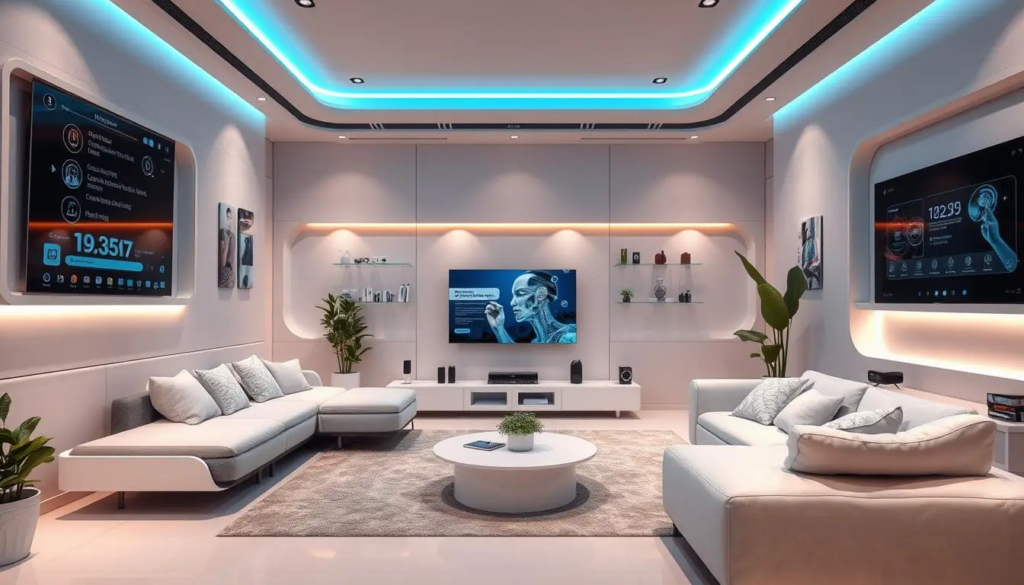
As smart home technology advances, it delivers various benefits, including convenience, energy savings, and increased security. However, multiple problems and factors must be considered before completely embracing AI home automation. Here are five key areas to consider:
1. Data Privacy and Security Risks
– Vulnerabilities in Smart Home Networks:
One of the most pressing issues about AI smart gadgets is their potential vulnerability to hacks. As IoT in smart homes becomes more interconnected, hackers may exploit weak areas in the network to get unwanted access to personal information.
– Steps for Securing AI-driven Systems:
To reduce risks, install robust security measures such as encryption, multi-factor authentication, and regular software updates to safeguard devices from breaches.
2. Integration and Compatibility Issues
– Challenges in Connecting Different Devices: Integrating many AI home automation systems from different brands can be difficult. Some gadgets may not operate well with others, resulting in connectivity issues and limited functionality.
– The Importance of Standard Protocols: Adopting common standards and protocols, such as Zigbee or Z-Wave, can improve compatibility and simplify the integration process of various smart home devices.
3. Cost and Accessibility:
– High Initial Investment: While AI smart gadgets have various benefits, the initial cost can be prohibitive for many people. People on lesser budgets may struggle to get high-quality AI home automation devices.
– Future Trends in Affordability: As technology progresses and competition grows, prices will likely fall. More affordable solutions will become available, bringing smart home technology to a broader audience.
4. Energy Consumption Concerns
– Power Usage of Smart Devices: Many people are concerned about the energy usage of always-linked AI smart devices. Some modern devices may use more electricity than ordinary appliances, prompting concerns about long-term energy expenses.
– Optimization Features: Future advancements may focus on improving energy efficiency in smart devices, allowing for a better balance of automation and sustainable power consumption.
5. Ethical and Privacy Considerations
– Surveillance Concerns: With the rise of AI-driven systems in homes, there’s an increasing concern about privacy. The constant data collection and potential surveillance from devices like smart cameras and voice assistants could raise ethical issues regarding data ownership.
Transparency in Data Use: Companies must be transparent about how they handle personal data to ensure consumer trust and regulatory compliance.
By thoughtfully addressing these challenges, consumers can make informed decisions, enjoy the full benefits of AI home automation, and safeguard their privacy and security.
Future Trends in AI-Driven Smart Homes
As AI evolves, smart homes become more sophisticated. AI in home automation is changing how we live, making homes more efficient, secure, and environmentally friendly. Here’s a look at future trends in AI-driven smart homes:
1. AI-Powered Predictive Maintenance
AI-powered predictive maintenance will become a key component of smart home technologies. Thanks to improved sensors and machine learning algorithms, AI can detect early indicators of device problems, even before they occur. This predictive feature ensures that appliances, HVAC systems, and other AI smart equipment are maintained before they break down, increasing their useful life. Here are the primary advantages:
– Preventative maintenance saves money on emergency repairs.
– Increased efficiency through improved performance tracking.
– Increased appliance lifespan by detecting problems early.
2. Enhanced Compatibility with 5G
The introduction of 5G transformed how AI smart gadgets connect in a smart home environment. With higher internet speeds and lower latency, 5G improves IoT interoperability in smart homes, making real-time data sharing seamless. Devices can interact practically instantly, resulting in increased automation and fewer delays.
This will result in faster response times for smart home systems.
– Improved integration with AI home automation products.
– Smarter connectivity for a completely automated home.
3. Sustainability and Eco-Friendly Technologies
Future smart houses will prioritize sustainability, with artificial intelligence driving eco-friendly solutions. AI home automation technologies will optimize energy use, allowing homeowners to lower their carbon footprint. AI-powered thermostats that remember your schedule and bright lighting that adapts based on natural light levels are ready to play an important part in energy conservation. The impact includes
- Efficient energy utilization and AI-powered climate control.
- Intelligent trash management that uses AI to monitor and sort waste.
- Eco-friendly appliances are designed to interact with AI to save energy.
AI-powered smart homes aren’t simply convenient; they pave the path for a more sustainable, connected, and efficient future.
FAQ’s
What is the definition of a revolutionary smart house in AI?
A revolutionary smart home in AI uses powerful artificial intelligence to automate, personalize, and optimize daily chores, making living spaces more efficient, secure, and comfortable.
How does AI improve smart home technology?
AI powers predictive automation, voice assistants, and data-driven insights, enabling devices to learn user preferences, increase energy efficiency, and strengthen security.
What are the benefits of owning an AI-powered smart home?
Increased convenience, energy savings, improved security, seamless device control, and personalized experiences thanks to machine learning are among the benefits.
What devices are typically part of an AI-powered smart home?
Common devices include AI assistants (like Alexa or Google Home), smart thermostats, lighting systems, security cameras, robotic cleaners, and smart appliances like refrigerators and ovens.
Is an AI-powered smart home secure?
While AI-powered smart homes offer advanced security features, like real-time monitoring and alerts, it’s crucial to implement strong passwords, regular updates, and encrypted networks to minimize risks.
AI smart homes adapt to individual preferences.
Yes, AI-enabled systems learn from user behavior over time, tailoring settings like lighting, temperature, and entertainment options to suit individual or family preferences.
Conclusion
Smart homes with AI provide convenience, efficiency, and increased security. From voice-controlled devices to automated energy management, AI is changing how we interact with our home surroundings.
As these technologies develop, they offer even more significant advances in personalization and sustainability. Embracing AI-powered smart home solutions can lead to a higher quality of life and more substantial energy savings, making now the ideal moment to incorporate these advances into your home.
